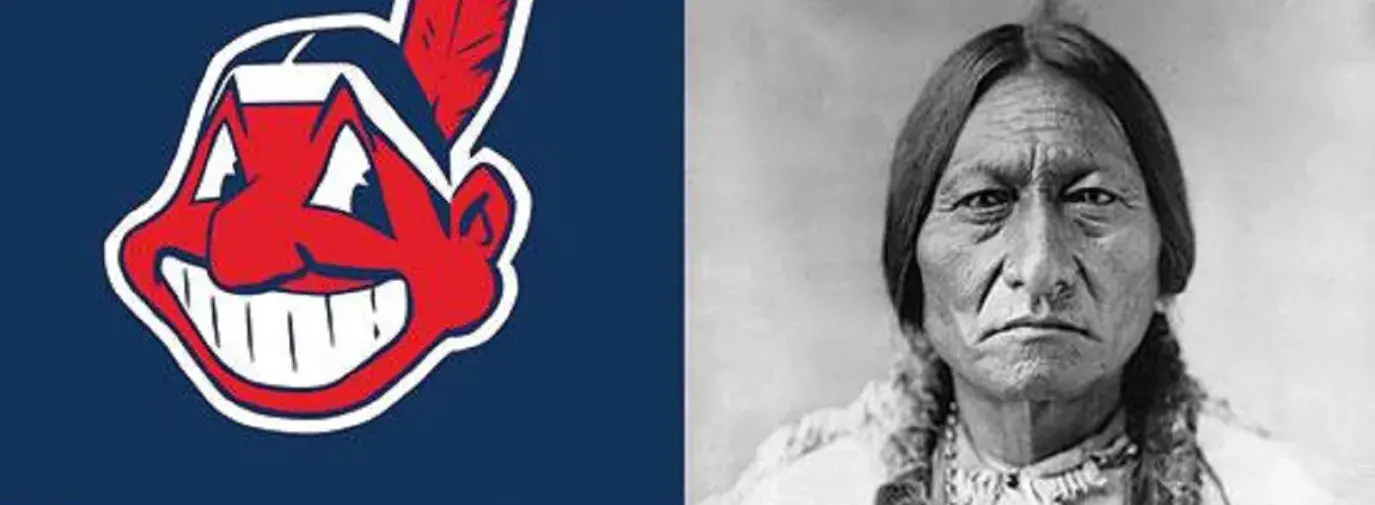
What do Crazy Horse Malt Liquor, Cherokee brand jeans, and Washington Redskins jackets have in common? All of these products are marketed through the use of Native American images—and all of their parent companies have been asked to stop using these images.
Companies often attach these images to their products because they feel people associate certain characteristics with Native Americans—such as bravery; strength; wisdom; or even an aggressive, war-like attitude—and they want consumers to associate these same qualities with their products or teams. The use of these images, say Gary Brouse, a program director at the Interfaith Center on Corporate Responsibility (ICCR) and a member of the American Indian Coalition on Institutional Accountability, “glosses over the depth and diversity of American Indian cultures. Basically, our history and traditions are being trivialized for marketing purposes.”
Many Native American groups are raising awareness about the impact of the use of these images by companies and sports teams, and they’re working toward a greater public understanding of their diverse tribal cultures. Here are the reasons why American Indian groups are troubled by the commercial use of their likenesses, and how you can help support their efforts to end this practice.
The Trouble With Words
“Many of the terms used to refer to Indian people actually came from non-indigenous people,” says Brouse. “Words like ‘redskin,’ ‘squaw,’ and ‘brave’ were all used in a derogatory way—it’s like using the ‘n-word’ to refer to African Americans.”
The word “redskin,” for instance, originally referred to the skin that was cut from Native Americans’ heads to claim bounty payments for having scalped them. “Some businesses—like the Washington Redskins football team—claim that they’re making these offensive words respectable, but to try to erase the history behind them is dangerous,” says Brouse. “We need to remember where we came from, and remember all the harm that was done to our people.
Adds Susan White, who directs the Oneida Nation's trust fund, ,“You very rarely see Native Americans in the media, and when you do, it’s often a one-sided portrayal. My son, who is 12, recently told me that he only sees Native Americans in the media fairly portrayed on the History or Discovery Channels, so he feels like we don’t even exist anymore for much of the world.” White directs the Oneida funds under socially responsible investing principles, which include dialoguing with companies that market offensive Indian images.
To help stop the stereotypes, refuse to use troublesome words and images yourself, and explain to people, sports teams, and companies who do use them why they’re problematic. For online resources, visit the Web sites of the American Indian Sports Team Mascots or the American Indian Movement (AIM)’s National Coalition on Racism in Sports and Media. If you’d like to invite a speaker to your community, contact AIM about their Speakers Bureau.
Boycotts for Crazy Horse's Legacy
Many Native Americans are particularly disturbed by the appropriation of the name “Crazy Horse” for marketing commercial items—and they’re using consumer dialogue and boycotts as a way to protect the revered Lakota Sioux leader’s legacy.
“Crazy Horse abhorred alcohol, which was brought to this continent by Europeans,” explains White, “so Crazy Horse Malt Liquor is an especially offensive product to the Lakota Sioux and Crazy Horse’s descendants.”
The Crazy Horse Defense Project (CHDP), which works to end the use of the Crazy Horse name on commercial products, was successful in getting SBC Holdings (formerly The Stroh Brewing Co.) to stop bottling Crazy Horse Malt Liquor. In addition to cutting SBC’s ties to this product, the company president issued a formal apology and presented gifts to the Lakota Sioux in a ceremony at the Rosebud Sioux reservation in South Dakota.
In contrast, the Hornell Brewing Co. still manufactures Crazy Horse Malt Liquor, despite requests that they stop using Crazy Horse’s name. The CHDP is bringing a lawsuit against Hornell to force the name change, with a trial date set for this October. CHDP is also calling for a boycott of Crazy Horse Malt Liquor, as well as AriZona Iced Tea, which is produced by Hornell’s parent company, Ferolito, Vultaggio & Sons.
Liz Claiborne also manufactures a line of CRaZY HORSE clothing that is sold in JC Penney stores, and Crazy Horse’s descendants have also asked these companies to stop using their ancestor’s name. The descendants and ICCR were involved in dialogue with Liz Claiborne for two years about this issue, but talks have since broken down. Now, the Crazy Horse Estate has asked consumers to boycott the brand.
Fostering Positive Responses
The good news is that communities and businesses across the country are moving away from the commercial use of Native American images. For example, White reports that community activism in Wisconsin, where the Oneida reservation is located, has led several schools to drop offensive Native American mascots. Here are some ways you can help support this movement:
1. Write letters of support to companies that have stopped using Native American images. The CHDP encourages consumers to send letters of thanks to BP for honoring CHDP requests to change an oil field’s name from “Crazy Horse” to “Thunder Horse,” as well as to SBC Holdings for halting the bottling of Crazy Horse Malt Liquor. If a business or sports team in your area has recently switched from a Native American name or mascot to a more neutral one, be sure to tell them you appreciate it. You can even write a letter to your local newspaper
2. Write letters to and participate in boycotts of companies using Native American images. Join in national efforts, such as the Crazy Horse Malt Liquor and AriZona Iced Tea boycott called by the CHDP. If one of your local sports teams uses a Native American mascot, support any organized boycott of their games and souvenirs, or write to the team’s management and your local newspaper to bring the issue to their attention.
3. Support shareholder initiatives to change companies’ use of Native American images. Several mutual funds and shareholder organizations are using their investor clout to conduct dialogues with companies around their use of Native American names or likenesses. For instance, Calvert funds participated in the Liz Claiborne/JC Penney dialogues (and divested from the companies when they refused to budge), and Walden Asset Management helped convince BP to change its oil field’s name. You can invest in a fund that participates in shareholder advocacy on these issues, and learn more about ongoing shareholder activities in this area from ICCR’s Equality Issues group and Green America’s Shareholder Action Network.
4. Direct your money to businesses that support Native American communities. “Community Development Financial Institutions (CDFIs) are becoming an effective way for tribes to spur development in their communities,” says Elsie Meeks, director of the First Nations Oweesta Corporation. “Most Native communities never had much small business ownership, so CDFIs are loaning people the money they need to start businesses to provide revenue to their communities.”
If you’ve got $5,000 to $100,000 that you’d like to invest, at a rate of up to three percent, you can loan it to a Native American CDFI and know that your money is helping someone start a grocery store, tire repair shop, arts and crafts store, or other business that will help keep money circulating locally. The Oweesta Corp., which provides financing and resources to encourage tribes to start new CDFIs, can supply a list of these institutions. If you don’t have that much money to invest, consider joining NativeEnergy’s WindBuilders program. WindBuilders helps tribes build wind turbines on reservations to generate environmental savings and community revenue, while helping you offset your household or office global warming emissions.
5. Be extra sensitive about the use of Native American images and objects. “Many images—for instance, eagle feathers that a teacher might hang in a classroom in a well-meaning effort to celebrate Native American culture—have sacred significance for us, so to see them used without the proper context is sacrilegious,” explains Brouse. If you’re thinking about displaying a Native American object or symbol, consider the meaning that it might have for Native Americans, and treat it accordingly. A little research can help you gauge the appropriateness of displaying something.
Finally, White urges anyone who’s interested in learning more about Native American culture to seek out local tribes in his or her area. You can contact your local Bureau of Indian Affairs to find out which tribes are represented in your region, and then check the Web for more information, since many tribes have Web sites. White encourages people to get involved with local tribes’ culture, noting that while some ceremonies are sacred and not open to the public, others, such as pow-wows, will welcome visitors. “As someone who’s concerned about the lack of awareness of Native American culture, I appreciate hearing from people who are interested in learning more about the tribe,” she says.







